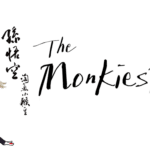The Vast Variety of Toronto
The Toronto opera scene is quite large and extremely varied; from Canadian Opera Company through multiple medium sized companies to an ever-changing array of smaller companies. One might expect this to lead to an equally varied set of responses to the twin pressures of COVID-19, as well as the intensified conversation around diversity and inclusivity produced by recent protests against police brutality. In fact, the similarities are more striking than the differences. In particular the breathing space afforded by not having to rush out shows has allowed for reflection about what opera should and could look like going forward.
Everybody, big and small, has been forced to cancel in-person performances for now. A return to full theatres, especially large ones, is still some way off. After an initial rush, much of it amateur, to get content online, several approaches have emerged. Some companies, Tapestry Opera and Opera Atelier for example, have moved quickly to develop high quality content on-line and are planning to move to a ‘hybrid’ approach with as large an in-person audience as regulations and safety will permit, buttressed by live-streaming.
Against the Grain Theatre is producing a regular stream of remotely recorded on line concerts and interviews and the COC has made online content available while it figures out how to use its various spaces and resources for some kind of live performances. Others like Opera 5 and Amplified Opera are more cautious. They see only a very limited return to the theatre until a vaccine is available and have mixed feelings about streamed content.
Longer term, most foresee a return to ‘business as usual’ with business and artistic models much unchanged. Yet it’s still possible that experimenting with alternative formats will lead to the breakdown of some operatic shibboleths such as amplification. Financially, for now at least, Toronto companies generally feel the situation is manageable given ongoing help from the Canada Council for the Arts, wage subsidies and reduced costs. Further cause for optimism: what little data exists suggests the audience is eager to come back to the theatre as soon as it’s perceived to be safe.
Economics + Education
In many ways, the inclusivity and diversity conversation has the greater potential to change the opera world. There is unanimity that opera needs to tell stories that are more relevant to everyone in our society and that everybody has a right to see themselves on our opera stages. Two key barriers repeatedly came up which are more acute for large companies than small.
The first is economics. Companies need to sell seats; to an extent that means satisfying that section of the existing audience that comes for a more ‘traditional’ opera experience. That restricts the ability to experiment.
The second is education. Arts education in schools is critical if people from ‘non traditional’ backgrounds are going to encounter and engage with opera, or choose to pursue it as a career. If government and society treat arts education as a frivolous luxury, then lifetime engagement with the arts is likely to remain limited to those whose family backgrounds provide the necessary exposure. This limits both audience growth in the broader community as well as the nurturing of BIPoC artists. After all, companies can only hire a more diverse set of artists and administrators if they are available.
Both Opera Atelier and the COC expressed the desire and intention to devote more resources to outreach and education. Many of the smaller companies are using the ‘break’ to focus more on community-building and engagement than performance.
The COC however, is restricted to an extent by its engagement in an international opera market. This is best exemplified by co-productions. They are an economic necessity but they are inherently conservative. The repertoire chosen is invariably mainstream and the choice of creative teams largely limited to known quantities. This mode of opera production makes it harder to tell different stories in different ways. There’s hope though: the COC’s recent modifications to Robert Wilson’s production of Turandot after its initial outings in Europe shows the system isn’t completely straitjacketed.
Bottom line: opera in Toronto is not going away and there’s a good deal of deep thinking going on about the future of the art form. There is optimism and there are constraints but, above all, a recognition that the inclusion of alternative perspectives (LBGTQ and BIPoC) in all phases of opera design and delivery has to happen.










